#date: june 21st 1904
Text
WHERE: Hyde Park
WHEN: June 21st, 1904
WHO: Open to all
Ira B. Vaisman was finally out of service, and now nothing stood between Zahir and the rank of first footman. Really, the only thing that could have made it better would have been if Ira had been fired rather that handed in his resignation, but it still sufficed. It had been a good week for Zahir, and he had been rather cheery ever since Ira had gone.
Granted, there was just one downside to it.
“Of course,” he said, looking over to the other team of Lords and Gentlemen, from one of the little tents around the pitch made for spectator to sit under and players to rest between games, “Vaisman chooses to leave now of all times. I guess he was scared to lose to the Lords.” There was a little note of gloating in there, even if he was annoyed by the fact that they were short one decent player—though he would never say that out loud.
“So, who do you think will win?”
18 notes
·
View notes
Photo

I’ve been going through my small collection of vintage ocean liner memorabilia and digitizing everything for posterity, before (hopefully) selling some stuff off. What little I have I’ll release to the public, as historical record, in hopes someone may benefit from it.
Breakfast menu card for “Second Cabin” aboard RMS Caronia, June 6th, 1906.
Item description and provenance under the cut:
dimensions: 12.6 x 10.1 cm
material: thin cardboard (like a modern breakfast cereal box)
[Captions:
Cunard Line, Royal Mail Steamer “Caronia”
Wednesday, June Sixth, 1906. Second Cabin Breakfast, menu:
Oranges, or figs. Hominy, or Quaker oats with fresh milk. Fried whiting (basically fish fingers) or Yarmouth bloaters (cold-smoked herring fish). Grilled rump steak, or grilled kidneys and bacon. Parsley omelette, or mashed potatoes. Watercress. Rice cakes with golden syrup; white and graham rolls, or soda scones. Marmalade, jam. Tea, coffee, or cocoa.]
The Caronia was a Cunard Line vessel launched on July 13th,1904, with its maiden voyage on February 25th, 1905. At the time this meal was served, Caronia and its twin sister Carmania (launched Feb. 21st 1905, maid. voy. Dec. 2nd) were the newest and largest ships in the Cunard fleet. But the very next day, on June 7th, 1906, they would be superseded by the launching of the RMS Lusitania, which would then become not only the largest vessel in Cunard’s fleet to date, but also the world.
I purchased this menu card c. 2013–14, and what little info I received has been lost by now. The card almost certainly would’ve been displayed vertically on a card-stand, but I don’t know whether this would’ve been used en masse atop the tables of the ship’s dining saloon, or in private cabins for breakfast in bed. Additionally, I don’t know whether the wording “Second Cabin Breakfast” refers a single breakfast seating for Second Class, or for a second of two seatings for the ship’s “Cabin” (i.e. First) Class. I do find it funny though that even in 1906, most people couldn’t stomach rice cakes without adding sweetener.
4 notes
·
View notes
Text
Murdoch Mysteries Calendar 2018
WARNING: INCREDIBLY LONG POST
Righty ho! Since @mariannenorway requested to have the entire calendar posted, and I am always one to grant people’s wishes, I’ve got the entire calendar here for you!
And don’t worry if you can’t read the writing on the pages, underneath each photo will be the title of the page, notable dates, birthdays and the writing from the bottom of each page! So let’s begin!
Note: For the different phases of the moon, it should be obvious what they are but if not, here you go:
First Quarter - First Quarter of the moon’s phase
Last Quarter - Last Quarter of the moon’s phase
New Moon - Moon phase starts again
Full Moon - The moon should be completely full in the sky

Current 2017 Months from September to December
Notable dates:
None
Description:
Set in Toronto at the dawn of the 20th century during the age of invention, Murdoch Mysteries is a one-hour drama series that explores the world of Detective William Murdoch (Yannick Bisson), a methodical and dashing detective who pioneers radical forensic techniques to solve some of the city;s most gruesome murders. Murdoch’s colleagues include his wife, the fiery and fiercely intelligent Dr. Julia Ogden (Hélène Joy); Constable George Crabtree (Jonny Harris), Murdoch’s eager but sometimes naive right-hand man; Inspector Thomas Brackenreid (Thomas Craig), Murdoch’s skeptical yet reluctantly supportive boss; and morgue assistant Rebecca James (Mouna Traoré), a resourceful young medical student taken under Ogden’s mentorship.
One of Canada’s most successful and longest-running drama series, Murdoch Mysteries is watched around the world in 110 countries and territories. The Season 10 finale ‘’Hell To Pay’’ marked 150 episodes of the series! Do you recognise and of your favourites in the collage above? Season 11 of Murdoch Mysteries will premiere in 2017/2018.
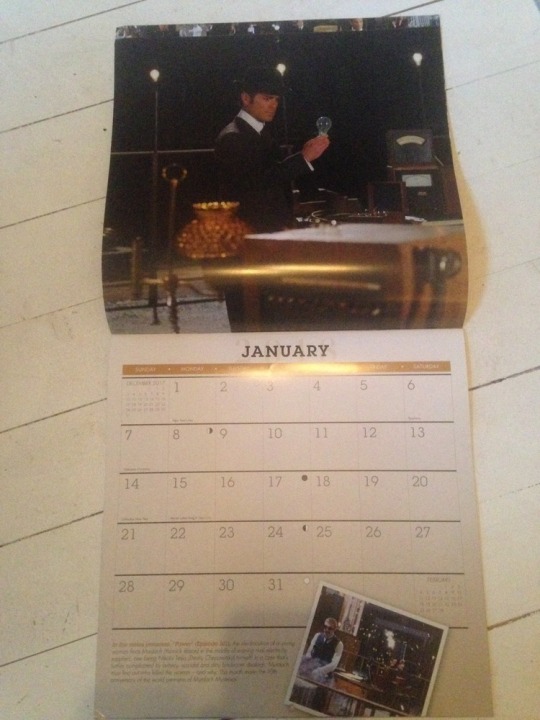
January
Notable dates:
January 1st - New Years Day
January 2nd - Full Moon
January 4th - 1 Year Anniversary of the Henry Higgins Trash Club
January 6th - Epiphany
January 7th - Orthodox Christmas
January 8th - Last Quarter
January 14th - Orthodox New Year
January 15th - Martin Luther King Jr. Day in the USA
January 17th - New Moon
January 24th - First Quarter
January 31st - Full Moon
Description
In the series premiere, ‘’Power’’ (Episode 101), the electrocution of a young woman finds Murdoch (Yannick Bisson) in the middle of warring rival electricity suppliers, one being Nikola Tesla (Dmitry Chepovetsky) himself! In a case that’s further complicated by bribery, scandal and dirty backroom dealings, Murdoch must find out who killed the woman - and why. This month marks the 10th anniversary of the world premiere of Murdoch Mysteries!
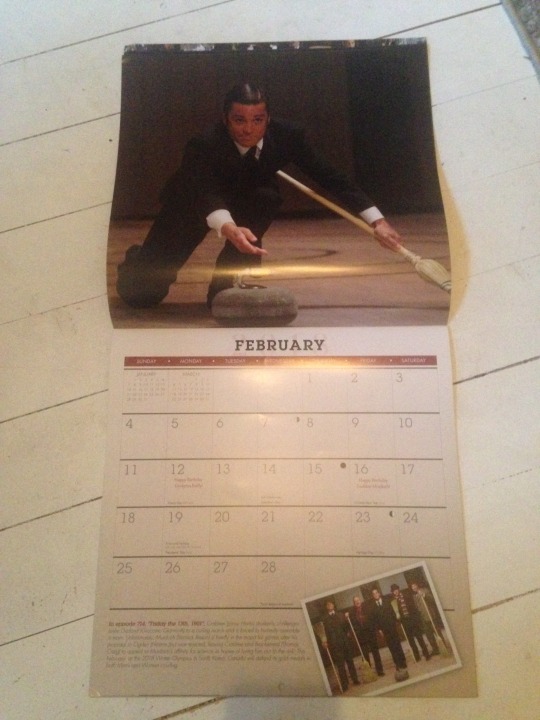
February
Notable dates:
February 7th - Last Quarter
February 12th - Georgina Reilly’s Birthday and Family Day in British Columbia, Canada
February 14th - Ash Wednesday and Valentines Day
February 15th - New Moon
February 16th - LACHLAN MURDOCH’S BIRTHDAY WOOOO! (Also Chinese New Year, Year of the Dog)
February 19th - Provincial Holiday in the following Canadian provinces:
Alberta
Manitoba
Nova Scotia
Ontario
Prince Edward Island
Saskatchewan
It’s also President’s Day in the USA
February 23rd - Heritage Day in the Yukon and the First Quarter
February 28th - Purim begins at sundown
Description
In Episode 714, ‘’Friday the 13th, 1901′’ Crabtree (Jonny Harris) drunkenly challenges Leslie Garland (Giacomo Gianniotti) to a curling match and is forced to hurriedly assemble a team. Unfortunately, Murdoch (Yannick Bisson) is hardly in the mood for games after his proposal to Ogden (Hélène Joy) was rejected, leaving Crabtree and Brackenreid (Thomas Craig) to appeal to Murdoch’s affinity for science in hopes of luring him out to the rink. This February, at the 2018 Winter Olympics in South Korea, Canada will defend its gold medals in both Men’s and Women’s curling.

March
@sibylle1898 you’ll like this month’s photo :)
Notable dates:
March 2nd - Full Moon
March 9th - Last Quarter
March 11th - Daylight Saving Time Begins
March 17th - New Moon and St. Patrick’s Day
March 20th - Spring Equinox
March 24th - First Quarter
March 25th - Palm Sunday
March 30th - Good Friday and Passover begins at sundown
March 31st - Full Moon
Description
In Episode 701 ‘’Murdoch Ahoy’’, a new passenger liner bound for Rochester is about to set sail, and Murdoch (Yannick Bisson) and Brackenreid (Thomas Craig) are called aboard by the owner, who is concerned about threats. When Murdoch spots Ogden (Hélène Joy) amongst the guests, he suggests they stay and monitor the situation. This episode was filmed aboard the S.S. Keewatin, the only remaining Edwardian passenger steamship in the world, which is now moored in Port McNicoll, Ontario. Built five years before the RMS Titanic, the S.S. Keewatin utilizes similar machinery including a quadruple expansion steam engine and Scotch boilers.

April
Notable dates:
April 1st - Easter Sunday and Orthodox Palm Sunday
April 2nd - Easter Monday
April 8th - Last Quarter and Pascha (Orthodox Easter)
April 16th - New Moon
April 22nd - First Quarter and Earth Day
April 23rd - Maureen Jennings’ Birthday and St. George’s Day in Newfoundland and Labrador (as well as over here in England)
April 30th - Full Moon
Description
In Episode 1002, ‘’Great Balls of Fire, Part 2′’, a massive fire consumes Toronto, complicating Murdoch’s (Yannick Bisson) investigation into the murders of two young women. When Ogden (Hélène Joy) is trapped by the intense fire, Murdoch braves the flames to rescue his wife. On April 19th, 104, Toronto’s business district was consumed in flames in what is known as The Great Fire of 1904. While no lives were lost in the fire, the cause of which was never determined, more than 250 firefighters worked to extinguish the blaze. Over 100 buildings were destroyed and 20 acres of the city levelled.

May
Notable dates:
May 5th - Cinco De Mayo in the USA
May 8th - Last Quarter
May 13th - Mother’s Day
May 15th - New Moon and Ramadan begins at sundown
May 16th - Yannick Bisson’s Birthday!
May 21st - Victoria Day all across Canada and National Patriot’s Day in Quebec
May 22nd - First Quarter
May 28th - William and Julia’s Wedding Anniversary and Memorial Day in the USA
May 29th - Full Moon
Description
In Episode 804, ‘’Holy Matrimony, Murdoch!’’, wedding bells finally ring for Murdoch (Yannick Bisson) and Ogden (Hélène Joy) in the landmark 100th episode of the series. When best man Crabtree (Jonny Harris) loses the ring, Higgins (Lachlan Murdoch) comes to the rescue by finding it just in time for the nearly derailed ceremony. Despite a case nearly getting in the way of the wedding, everything comes happily together for the lovebirds in the end. The two were wed on May 28th, 1902.

June
Notable dates:
June 6th - Last Quarter
June 13th - New Moon
June 14th - Eid al-Fitr begins at sundown
June 17th - Father’s Day
June 19th - Henry Higgins Trash Club’s Birthday! (aka my birthday)
June 20th - First Quarter
June 21st - Summer Solstice and National Aboriginal Day in Northwest Territories of Canada
June 24th - National Holiday of Quebec in Quebec
June 25th - Discovery Day in Newfoundland and Labrador
June 28th - Full Moon
Description
In Episode 1008, ‘’Weekend at Murdoch’s’’, after two witnesses in a murder trial are killed while birdwatching, Murdoch (Yannick Bisson) and Crabtree (Jonny Harris) must protect the third witness. Much to Crabtree’s dismay, the witness is Roger Newsome (Cyrus Lane), the obnoxious playboy who flustered him during previous investigations into crimes at his automobile, golf and puzzle-solving clubs. Unfortunately, Newsome fails to grasp the risk to his life and when he sneaks out and is shot and killed by a sniper, Murdoch devises an outlandish ploy to keep the case alive and smoke out the killer by faking Newsome’s survival.

July
@detectivewatts I believe this is your month :)
Notable dates:
July 1st - Canada Day
July 2nd - William Murdoch’s Birthday! (born in 1863)
July 4th - Independence Day in the USA
July 6th - Last Quarter
July 9th - Nunavut Day in Nunavut and Orangemen’s Day in Newfoundland and Labrador
July 13th - New Moon
July 19th - First Quarter
July 27th - Full Moon
Description
In Season 10, the rumpled and gruff Llewellyn Watts (Daniel Maslany) arrives from Station House No. 1. Upon hearing about Brackenreid’s temporary departure, in addition to being asked to leave his home station over personality conflicts, Watts decides that Station House No. 4 needs another detective and decides to make himself comfortable in the Inspector’s office.

August
@crabtreee your month I presume?
Notable dates:
August 4th - Last Quarter
August 6th - Civic Holiday in every Canadian province except the following:
Quebec
Newfoundland and Labrador
Yukon
August 11th - New Moon
August 18th - First Quarter
August 20th - Discovery Day in Yukon
August 21st - Eid al-Adha begins at sundown
August 26th - Full Moon
Description
In Episode 912, ‘’Unlucky In Love’’, the electrocution of an elderly groom leads Murdoch (Yannick Bisson) to suspect a black widow, while Crabtree (Jonny Harris) meets Lucy Maud Montgomery (Alison Louder) at a writing class he teaches. While the charming constable is arguably a romatic at heart, it seems that he hasn’t quite found the right person at the right time, though at the end of Season 10 he may be falling back into the arms of Nina Bloom (Erin Agostino)...

September
Notable dates:
September 3rd - Last Quarter and Labour Day in Canada and USA
September 9th - New Moon and Rosh Hashanah begins at sundown
September 10th - Muharram begins at sundown
September 16th - First Quarter
September 17th - Daniel Maslany’s Birthday!
September 18th - Yom Kippur begins at sundown
September 21st - UN International Day of Peace
September 22nd - Jonny Harris’ Birthday!
September 23rd - Autumn Equinox
September 25th - Full Moon
Description
In Episode 1005, ‘’Jagged Little Pill’’, James (Mouna Traoré) has been studying to become a doctor at the Medical College for Women at Ogden’s (Hélène Joy) urging. But when one of her fellow students is found drowned from an apparent suicide, she is convinced something is amiss and begins her own secret investigation. She soon discovers some unsettling information with repercussions for Murdoch’s investigation, leaving her in a quandary over whether to reveal her meddling or stay quiet.

October
Notable dates:
October 2nd - Last Quarter
October 8th - Thanksgiving Day in Canada and Columbus Day in the USA
October 9th - New Moon
October 13th - Arwen Humphrey’s Birthday!
October 16th - First Quarter
October 21st - Hélène Joy’s Birthday!
October 24th - Full Moon and United Nations Day
October 25th - Kristian Bruun’s Birthday!
October 31st - Halloween and Last Quarter
Description
In Episode 1016, ‘’Master Lovecraft’’, the discovery of a young girl’s dead body and some grotesque sketches lead Murdoch (Yannick Bisson) to suspect a gang of death-obsessed teenagers, which includes a young H.P. Lovecraft (Tyler East). Meanwhile, the macabre seems to be spreading to civilized society when Margaret Brackenreid (Arwen Humphreys) finds out her reading group has chosen Dracula. After a creepy run-in with Lovecraft, Margaret soon finds him haunting her subconscious when literature’s most famous vampire (East) pays her a visit... in her nightmares!
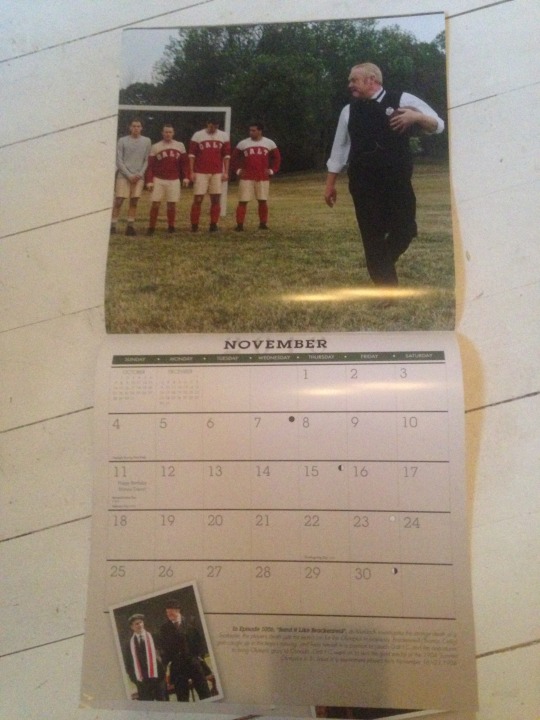
November
@tommy-two-cakes this is your month I imagine :)
Notable dates:
November 4th - Daylight Saving Time Ends
November 7th - New Moon
November 11th - Mouna Traoré’s Birthday, Remembrance Day in Canada and Veterans Day in the USA
November 15th - First Quarter
November 22nd - Thanksgiving in the USA
November 23rd - Full Moon
November 30th - Last Quarter
Description
In Episode 1006, ‘’Bend It Like Brackenreid’’, as Murdoch investigates the strange death of a footballer, the player’s death puts his team’s run for the Olympics in jeopardy. Brackenreid (Thomas Craig) gets caught up in the team’s training, and finds himself in a position to coach Galt F.C. and the opportunity to bring Olympic glory to Canada. Galt F.C. went on to win the gold medal at the 1904 Summer Olympics in St. Louis in a tournament played from November 16-23, 1904.

December
Notable dates:
December 2nd - Advent and Hanukkah begins at sundown
December 4th - Thomas Craig’s Birthday!
December 7th - New Moon
December 15th - First Quarter
December 21st - Winter Solstice
December 22nd - Full Moon
December 25th - Christmas Day
December 26th - Boxing Day
December 29th - Last Quarter
Description
In the holiday special ‘’Once Upon a Murdoch Christmas’’, brazen robberies target Toronto’s wealthiest businessmen just days before Christmas. Murdoch (Yannick Bisson) and Brackenreid (Thomas Craig) realise that their jobs are under fire if they don’t quickly solve the case. Meanwhile, Jackson (Kristian Bruun) and James (Mouna Traoré) team up to bring Christmas spirit to the Station House with a police choir, Crabtree’s (Jonny Harris) latest novel finds some unlikely fans, and Ogden (Hélène Joy) is stalked by two street urchins who need her help. All the while Murdoch works to surprise Ogden with a mysterious gift.
DONE. NOW IF YOU’LL EXCUSE ME I NEED TO GO AND SEVERE MY HANDS OFF BECAUSE THEY HURT AFTER THIS
51 notes
·
View notes
Text
A short history of May Day | libcom.org

The history of the world holiday on the 1st May - May Day, or International Workers Day, held in commemoration of four anarchists executed for struggling for an 8-hour day.
Originally a pagan holiday, the roots of the modern May Day bank holiday are in the fight for the eight-hour working day in Chicago in 1886, and the subsequent execution of innocent anarchist workers.
In 1887, four Chicago anarchists were executed; a fifth cheated the hangman by killing himself in prison. Three more were to spend 6 years in prison until pardoned by Governor Altgeld who said the trial that convicted them was characterised by “hysteria, packed juries and a biased judge”. The state had, in the words of the prosecution put “Anarchy is on trial” and hoped their deaths would also be the death of the anarchist idea.
The anarchists were trade union organisers and May Day became an international workers day to remember their sacrifice. They were framed on false charges of throwing a bomb at police breaking up a demonstration in Chicago. This was part of a strike demanding an 8 hour day involving 400,000 workers in Chicago that started May 1st 1886 .
It began over a century ago when the American Federation of Labour adopted an historic resolution which asserted that “eight hours shall constitute a legal day’s labour from and after May 1st, 1886”.
In the months prior to this date workers in their thousands were drawn into the struggle for the shorter day. Skilled and unskilled, black and white, men and women, native and immigrant were all becoming involved.
Chicago
In Chicago alone 400,000 were out on strike. A newspaper of that city reported that “no smoke curled up from the tall chimneys of the factories and mills, and things had assumed a Sabbath-like appearance”. This was the main centre of the agitation, and here the anarchists were in the forefront of the labour movement. It was to no small extent due to their activities that Chicago became an outstanding trade union centre and made the biggest contribution to the eight-hour movement.
The Chicago anarchist movement was also strong. In 1884, they produced the world’s first Anarchist daily newspaper, the Chicagoer Arbeiter-Zeitung, plus a weekly, Fackel, and a Sunday edition, Vorbote. By 1886, these newspapers had a circulation of over 26,000 - read by the large German immigrant working class community of the city. There were also newspapers for English, Bohemian and Scandinavian speakers. As well as this, Chicago anarchists were active in the unions and organised picnics, lectures, dances, libraries and other events for workers. These helped forge strong bonds of class solidarity, which was worrying to the bosses who were keen to break the workers’ organisations.
When on May 1st 1886, the eight hour strikes convulsed that city, one half of the workforce at the McCormick Harvester Co. came out. Two days later a mass meeting was held by 6,000 members of the ‘lumber shovers’ union who had also come out. The meeting was held only a block from the McCormick plant and was joined by some 500 of the strikers from there.
The workers listened to a speech by the anarchist August Spies, who has been asked to address the meeting by the Central Labour Union. While Spies was speaking, urging the workers to stand together and not give in to the bosses, the strikebreakers were beginning to leave the nearby McCormick plant.
The strikers, aided by the 'lumber shovers’ marched down the street and forced the scabs back into the factory. Suddenly a force of 200 police arrived and, without any warning, attacked the crowd with clubs and revolvers. They killed at least one striker, seriously wounded five or six others and injured an indeterminate number.
Outraged by the brutal assaults he had witnessed, Spies went to the office of the Arbeiter-Zeitung and composed a circular calling on the workers of Chicago to attend a protest meeting the following night.
The protest meeting took place in the Haymarket Square and was addressed by Spies and two other anarchists active in the trade union movement, Albert Parsons and Samuel Fielden.
The police attack
Throughout the speeches the crowd was orderly. Mayor Carter Harrison, who was present from the beginning of the meeting, concluded that “nothing looked likely to happen to require police interference”. He advised police captain John Bonfield of this and suggested that the large force of police reservists waiting at the station house be sent home.
It was close to ten in the evening when Fielden was closing the meeting. It was raining heavily and only about 200 people remained in the square. Suddenly a police column of 180 men, headed by Bonfield, moved in and ordered the people to disperse immediately. Fielden protested “we are peaceable”.
Bomb
At this moment a bomb was thrown into the ranks of the police. It killed one, fatally wounded six more and injured about seventy others. The police opened fire on the spectators. How many were wounded or killed by the police bullets was never exactly ascertained.
A reign of terror swept over Chicago. The press and the pulpit called for revenge, insisting the bomb was the work of socialists and anarchists. Meeting halls, union offices, printing works and private homes were raided. All known socialists and anarchists were rounded up. Even many individuals ignorant of the meaning of socialism and anarchism were arrested and tortured. “Make the raids first and look up the law afterwards” was the public statement of Julius Grinnell, the state’s attorney.
Trial
Eventually eight men stood trial for being “accessories to murder”. They were Spies, Fielden, Parsons, and five other anarchists who were influential in the labour movement, Adolph Fischer, George Engel, Michael Schwab, Louis Lingg and Oscar Neebe.
The trial opened on June 21st 1886 in the criminal court of Cooke County. The candidates for the jury were not chosen in the usual manner of drawing names from a box. In this case a special bailiff, nominated by state’s attorney Grinnell, was appointed by the court to select the candidates. The defence was not allowed to present evidence that the special bailiff had publicly claimed “I am managing this case and I know what I am about. These fellows are going to be hanged as certain as death”.
Rigged jury
The eventual composition of the jury was farcical; being made up of businessmen, their clerks and a relative of one of the dead policemen. No proof was offered by the state that any of the eight men before the court had thrown the bomb, had been connected with its throwing, or had even approved of such acts. In fact, only three of the eight had been in Haymarket Square that evening.
No evidence was offered that any of the speakers had incited violence, indeed in his evidence at the trial Mayor Harrison described the speeches as “tame”. No proof was offered that any violence had been contemplated. In fact, Parsons had brought his two small children to the meeting.
Sentenced
That the eight were on trial for their anarchist beliefs and trade union activities was made clear from the outset. The trial closed as it had opened, as was witnessed by the final words of Attorney Grinnell’s summation speech to the jury. “Law is on trial. Anarchy is on trial. These men have been selected, picked out by the Grand Jury, and indicted because they were leaders. There are no more guilty than the thousands who follow them. Gentlemen of the jury; convict these men, make examples of them, hang them and you save our institutions, our society.”
On August 19th seven of the defendants were sentenced to death, and Neebe to 15 years in prison. After a massive international campaign for their release, the state 'compromised’ and commuted the sentences of Schwab and Fielden to life imprisonment. Lingg cheated the hangman by committing suicide in his cell the day before the executions. On November 11th 1887 Parsons, Engel, Spies and Fischer were hanged.
Pardoned
600,000 working people turned out for their funeral. The campaign to free Neebe, Schwab and Fielden continued.
On June 26th 1893 Governor Altgeld set them free. He made it clear he was not granting the pardon because he thought the men had suffered enough, but because they were innocent of the crime for which they had been tried. They and the hanged men had ben the victims of “hysteria, packed juries and a biased judge”.
The authorities has believed at the time of the trial that such persecution would break the back of the eight-hour movement. Indeed, evidence later came to light that the bomb may have been thrown by a police agent working for Captain Bonfield, as part of a conspiracy involving certain steel bosses to discredit the labour movement.
When Spies addressed the court after he had been sentenced to die, he was confident that this conspiracy would not succeed:
“If you think that by hanging us you can stamp out the labour movement… the movement from which the downtrodden millions, the millions who toil in misery and want, expect salvation - if this is your opinion, then hang us! Here you will tread on a spark, but there and there, behind you - and in front of you, and everywhere, flames blaze up. It is a subterranean fire. You cannot put it out”.
Public holiday
In 1889, the first congress of the Second International, meeting in Paris for the centennial of the French Revolution and the Exposition Universelle, following a proposal by Raymond Lavigne, called for international demonstrations on the 1890 anniversary of the Chicago protests. May Day was formally recognized as an annual event at the International’s second congress in 1891.
Subsequently, the May Day Riots of 1894 occurred. In 1904, the International Socialist Conference meeting in Amsterdam called on “all Social Democratic Party organizations and trade unions of all countries to demonstrate energetically on May First for the legal establishment of the 8-hour day, for the class demands of the proletariat, and for universal peace.” The congress made it “mandatory upon the proletarian organizations of all countries to stop work on May 1, wherever it is possible without injury to the workers.”
In many countries, the working classes sought to make May Day an official holiday, and their efforts largely succeeded. May Day has long been a focal point for demonstrations by various socialist, communist and anarchist groups.
In the United States and Canada, however, the official holiday for workers is Labor Day in September. After the Haymarket Square riot in May, 1886, US President Grover Cleveland feared that commemorating Labor Day on May 1 could become an opportunity to commemorate the riots. Thus he moved in 1887 to support the Labor Day that the anti-anarchist union the Knights Of Labor supported.
Right-wing governments have traditionally sought to repress the message behind International Workers’ Day, with fascist governments in Portugal, Italy, Germany and Spain abolishing the workers’ holiday, and the Conservative party in the UK currently [2011] attempting to abolish the UK’s annual May Day Bank Holiday.
817 notes
·
View notes
Text
#341 November 13, 2018
Matt writes: Passes for the 21st annual Roger Ebert's Film Festival (a.k.a. Ebertfest) in Champaign, Illinois, are now on sale. The same amount of films will be screened next year, though the festival will take place over four days instead of five, enabling the closing night festivities to pack an even greater punch. Please join us for Ebertfest 2019, running from Wednesday, April 10th, through Saturday, April 13th. Tickets can be purchased through the festival website, the theater website or the theater box office, 203 W. Park Ave., Champaign, 217-356-9063. Individual tickets will be available for purchase on Monday, April 1st. Click here to read the full announcement, and make sure to watch the official video for last year's installment of Ebertfest embedded below.
vimeo
Trailers
Capernaum (2018). Directed by Nadine Labaki. Written by Nadine Labaki, Khaled Mouzanar, Jihad Hojeily and Michelle Keserwany. Starring Zain Al Rafeea, Yordanos Shiferaw, Boluwatife Treasure Bankole. Synopsis: While serving a five-year sentence for a violent crime, a 12-year-old boy sues his parents for neglect. Opens in US theaters on December 14th, 2018.
youtube
Head Full of Honey (2018). Directed by Til Schweiger. Written by Til Schweiger, Lo Malinke and Jojo Moyes (based on the movie written by Til Schweiger and Hilly Martinek). Starring Nick Nolte, Matt Dillon, Emily Mortimer. Synopsis: A man suffering from Alzheimer's embarks on a final road trip with his granddaughter. Opens in US theaters on November 30th, 2018.
youtube
The House That Jack Built (2018). Written and directed by Lars von Trier. Starring Matt Dillon, Bruno Ganz, Uma Thurman. Synopsis: The story follows Jack, a highly intelligent serial killer, over the course of twelve years, and depicts the murders that really develop his inner madman. Opens in US theaters on November 28th, 2018.
youtube
The Ballad of Buster Scruggs (2018). Written and directed by Ethan Coen and Joel Coen. Starring Tim Blake Nelson, Zoe Kazan, Stephen Root. Synopsis: An anthology film comprised of six stories, each dealing with a different aspect of life in the Old West. Opens in US theaters on November 16th, 2018.
youtube
Isn't It Romantic (2019). Directed by Todd Strauss-Schulson. Written by Erin Cardillo, Dana Fox and Katie Silberman. Starring Rebel Wilson, Priyanka Chopra, Betty Gilpin. Synopsis: A young woman disenchanted with love mysteriously finds herself trapped inside a romantic comedy. Opens in US theaters on February 14th, 2019.
youtube
Blue My Mind (2018). Written and directed by Lisa Brühlmann. Starring Luna Wedler, Zoë Pastelle Holthuizen, Regula Grauwiller. Synopsis: 15-year-old Mia is facing an overwhelming transformation which calls her entire existence into question. Her body is changing radically, and despite desperate attempts to halt the process, she is soon forced to accept that nature is far more powerful than her. US release date is TBA.
youtube
Back Roads (2018). Directed by Alex Pettyfer. Written by Adrian Lyne and Tawni O'Dell (based on the novel by Tawni O'Dell). Starring Juliette Lewis, Jennifer Morrison, Robert Longstreet. Synopsis: An unusual set of circumstances brings unexpected success to a pop star. US release date is TBA.
youtube
The Quake (2018). Directed by John Andreas Andersen. Written by John Kåre Raake and Harald Rosenløw-Eeg. Starring Kristoffer Joner, Ane Dahl Torp, Jonas Hoff Oftebro. Synopsis: In 1904 an earthquake of magnitude 5.4 on the Richter scale shook Oslo, with an epicenter in the "Oslo Graben" which runs under the Norwegian capital. There are now signs that indicate that we can expect a major future earthquake in Oslo. US release date is TBA.
youtube
Between Worlds (2018). Written and directed by Maria Pulera. Starring Nicolas Cage, Franka Potente, Penelope Mitchell. Synopsis: Joe meets a mother who can contact spirits when suffocating. Her daughter is dying when Joe helps the mother spiritually contact the daughter and save her. Unfortunately, the spirit in the daughter's body is now that of Joe's dead wife. US release date is TBA.
youtube
A Dog's Way Home (2019). Directed by Charles Martin Smith. Written by W. Bruce Cameron and Cathryn Michon (based on the book by W. Bruce Cameron). Starring Bryce Dallas Howard, Ashley Judd, Edward James Olmos. Synopsis: A dog travels 400 miles in search of her owner. Opens in US theaters on January 11th, 2019.
youtube
Spies in Disguise (2019). Directed by Nick Bruno and Troy Quane. Starring Karen Gillan, Will Smith, Tom Holland. Synopsis: When the world's best spy is turned into a pigeon, he must rely on his nerdy tech officer to save the world. Opens in US theaters on September 13th, 2019.
youtube
Tyler Perry's A Madea Family Funeral (2019). Directed by Tyler Perry. Written by Tyler Perry and Jason Rogers. Starring Courtney Burrell, Tyler Perry, Patrice Lovely. Synopsis: A joyous family reunion becomes a hilarious nightmare as Madea and the crew travel to backwoods Georgia, where they find themselves unexpectedly planning a funeral that might unveil unsavory family secrets. Opens in US theaters on March 1st, 2019.
youtube
Jonathan (2018). Directed by Bill Oliver. Written by Gregory Davis, Peter Nickowitz and Bill Oliver. Starring Ansel Elgort, Patricia Clarkson, Suki Waterhouse. Synopsis: Jonathan leaves the office everyday at noon. When he gets home, he goes to sleep. Every morning he wakes up and there is a breakfast prepared for him along with a video telling him about the second part of his day. Opens in US theaters on November 16th, 2018.
youtube
Five Feet Apart (2019). Directed by Justin Baldoni. Written by Mikki Daughtry and Tobias Iaconis. Starring Cole Sprouse, Haley Lu Richardson, Claire Forlani. Synopsis: A pair of teenagers with life-threatening illnesses meet in a hospital and fall in love. Opens in US theaters on March 22nd, 2019.
youtube
Miss Bala (2019). Directed by Catherine Hardwicke. Written by Gareth Dunnet-Alcocer. Starring Gina Rodriguez, Anthony Mackie, Matt Lauria. Synopsis: Gloria finds a power she never knew she had when she is drawn into a dangerous world of cross-border crime. Surviving will require all of her cunning, inventiveness, and strength. Opens in US theaters on February 1st, 2019.
youtube
Mowgli (2018). Directed by Andy Serkis. Written by Callie Kloves (based on the novel by Rudyard Kipling). Written by Billy Ray and Mark L. Smith. Starring Christian Bale, Benedict Cumberbatch, Cate Blanchett. Synopsis: A human child raised by wolves must face off against a menacing tiger named Shere Khan, as well as his own origins. Debuts on Netflix on December 7th, 2018.
youtube
The Secret Life of Pets 2 (2019). Directed by Chris Renaud. Written by Brian Lynch. Starring Patton Oswalt, Eric Stonestreet, Kevin Hart. Synopsis: A follow-up to the hit film, "The Secret Life of Pets." Opens in US theaters on June 7th, 2019.
youtube
Missing Link (2019). Written and directed by Chris Butler. Starring Zoe Saldana, Hugh Jackman, Timothy Olyphant. Synopsis: The charismatic Sir Lionel Frost considers himself to be the world's foremost investigator of myths and monsters. The trouble is none of his small-minded high-society peers seems to recognize this. Sir Lionel's last chance for acceptance by the adventuring elite rests on traveling to America's Pacific Northwest to prove the existence of a legendary creature. A living remnant of Man's primitive ancestry. The Missing Link. Opens in US theaters on April 12th, 2019.
youtube
Paul Dano on "Wildlife"
Matt writes: The wonderful actor-turned-director Paul Dano (memorably featured in "Little Miss Sunshine" and "There Will Be Blood") recently spoke with Nick Allen about his acclaimed directorial debut, "Wildlife," featuring Oscar-worthy turns by Carey Mulligan and Jake Gyllenhaal. Read their full conversation here.
youtube
"Little Tickles" wins Ebert Award
Matt writes: Allison Shoemaker reports on Andréa Bescond and Eric Métayer's French drama, "Little Tickles," which her jury named as this year's recipient of the Roger Ebert Award at the 2018 Chicago International Film Festival.
youtube
Free Movies
Garfield's Halloween Adventure (1985). Directed by Phil Roman. Written by Jim Davis. Starring Lorenzo Music, Thom Huge, Gregg Berger. Synopsis: Garfield has one spooktacular adventure on the Eve of All Saints. He fashions himself a pirate costume then takes Odie out trick-or-treating to ensure extra candy. But when attempting to cross a river on a boat, Garfield and Odie end up at a haunted house.
Watch "Garfield's Halloween Adventure"
A Garfield Christmas Special (1987). Directed by Phil Roman and George Singer. Written by Jim Davis. Starring Lorenzo Music, Thom Huge, Pat Carroll. Synopsis: Garfield, Jon, and Odie go to Jon's grandmother's house for Christmas, where Garfield finds a present for Grandma.
Watch "A Garfield Christmas Special"
Garfield's Thanksgiving (1989). Directed by Phil Roman, Gerard Baldwin, Bob Nesler and John Sparey. Written by Jim Davis and Kim Campbell. Starring Lorenzo Music, Thom Huge, Pat Carroll. Synopsis: Finds Jon with a love interest-a veterinarian who orders Garfield on a diet-and then comes for Thanksgiving dinner!
Watch "Garfield's Thanksgiving"
from All Content https://ift.tt/2zNFlad
1 note
·
View note
Text
MJ vs. Prince - Showdown at the Silent Disco!
Hard to believe that this past weekend, on April 21st, 2018, marked the two year anniversary of the death of Prince Rogers Nelson - The Artist better known as Prince.
For decades - LITERALLY FIVE DECADES - Prince has been one of the greatest, most talented, versatile, and enduring Artists of our time and remains one of the greatest in history since his untimely death two years ago. He was one of those creatives that was so prolific and ubiquitous that you knew who he was even if you didn't necessarily stand for him. He was undeniable. He was so much a part of the collective consciousness that his death was one of those that you remember where you were when you heard about it.
I remember exactly where I was when I heard of Prince's passing. I was on my second round of playing a corporate drone in a cubicle jungle getting paid way too well to be doing the nonsense we were doing. The news came in waves. First he was dead. Then he was just sick. Then he was for SURE dead. I brushed it off, not only because it seemed like another social media hoax gone bad, but in my mind, the idea of Prince dying was unfathomable. Prince was a magical, musical, immortal, Unicorn Demigod that would outlive us all and look upon our decomposing shells with disdain and scorn. Prince had been huge my whole life and was well established for a decade before I was even born. Prince was just always THERE being brilliant and amazing, every step of the way. And now we were supposed to believe he was GONE? No. Way.
But, alas, Way. Prince had passed and we would eventually find out the cause of his premature death was due to a Fentanyl overdose. This would be another sad and abrupt ending to the Life of a Legend.
As if it wasn't already nearly impossible to bring up Prince without mentioning another (let's be real, THE ONLY other) insanely famous Icon of the same timeframe, the eerie similarities in the circumstances around both of their deaths only sealed the deal.
Michael Jackson - arguably the Greatest Performer of all time and THE King of Pop - died similarly and tragically on June 25th, 2009 of cardiac arrest induced by a Propofol cocktail overdose almost 7 years prior. (I remember exactly where I was the day that news broke as well. I was at an AMC watching whatever Transformers movie was hot that summer. As I exited the theater and turned on my phone, I was flooded with moment to moment updates from my mother and friends on MJ's final downward spiral. I was devastated.)
As tragic as it was to lose BOTH of these Artists, their legacies have continued and remain living on well past their deaths. The rivalry that may or may not have existed between them spilled over and manifested itself most apparently in each of their fan bases. People have been and will continue to argue for decades to come about who was best. Pound for artistic pound, these two consistently went toe to toe.
Personally, I love them both, but ultimately have to claim #TeamMichael. By the time I was born in the 80's, they were both well established artists, but Michael impacted me the most. I adored that man from the moment I became aware of him in my early days, during his insane reign as the King of Pop, throughout all of the controversy, until the day he died. I was fascinated and captivated by every single thing Michael did. I loved his music and would watch every new music video release or concert with bated breath.
Bad was the first vinyl record I owned… Well, aside from The Adventures of Strawberry Shortcake and Friends… but I digress.
Of course, personal preference aside, when it comes down to strictly the music, talent and artistic prowess, the argument becomes harder to win. These two will forever reign supreme in the annals of music history and I suspect the debate will go on forever.
(Which leads me to this shameless plug...)
What better way to continue the debate and show love and respect to their Royal Highness's by joining the Hip Hop and Hookah Family on May 18th, 2018 for
"The King of Pop" vs. "His Royal Badness"
A Silent Disco Battle!
We're taking over 1904 Music Hall and pitting DJ's Dialectable Beats (spinning for MJ) against NICKFRESH (repping Prince) in a Silent Disco battle unlike any other you've seen in Duval. If you don't know what a silent disco is, or have never been to one - you are in for a treat! Upon arrival you will receive a set of headphones through which you can choose to tune in to one of two channels playing music from either Michael or Prince. You can switch from one channel to the next and jam out in your own, private little world. When or if you're ready to take a break, you can give your headphones a rest and have a conversation with someone at a normal, human level without being disturbed or disturbing anyone still rocking out to their choice of tunes.
Costumes are encouraged, but not required, so please save the date and get ready for an unforgettable #DuvalNight! It's going to be a really amazing and you do not want to miss it!
Prince and Michael may be gone, but they are not forgotten. Come out on Friday, May 18th and represent for Musical Royalty! Check the links below for more info!
· Om Shanti · xx · EnerJi ~ Follow me on Instagram and Twitter @iAmEnerJi
Click here for the Facebook Event Page!
Get your tickets on TicketFly or link up with me, MasAppeal or someone from the Hip Hop and Hookah Crew for tickets in person.
$10 in advance - $15 on the day of or at the door
VIP Packages Available
#DJ#Mas Appeal#Hip Hop And Hookah#Shows#Silent Disco#Hip Hop & Hookah#New Experiences#Jacksonville#Music#Duval#EnerJi#Prince#Michael Jackson#Events#Things to do#Jax#Event
0 notes
Photo



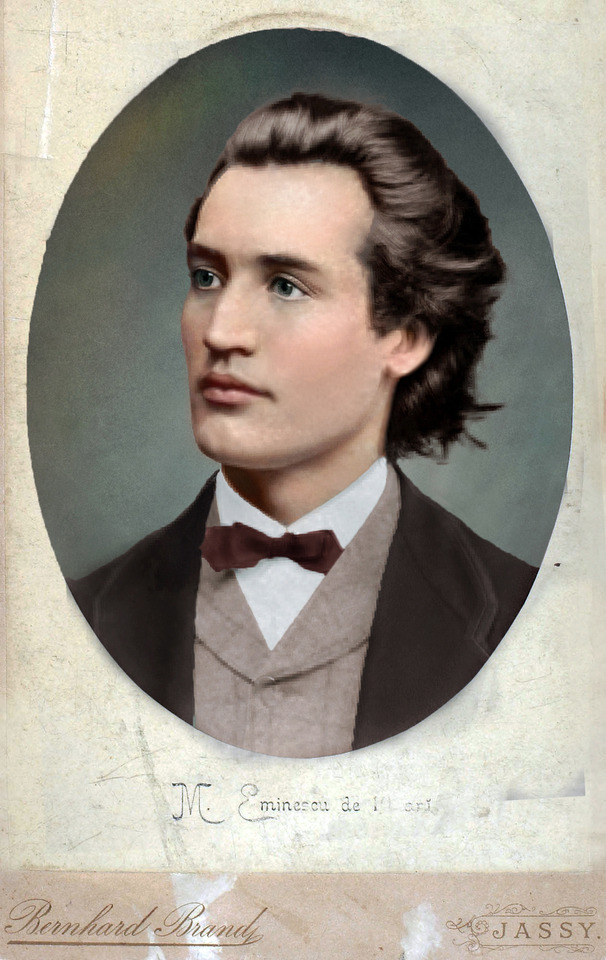
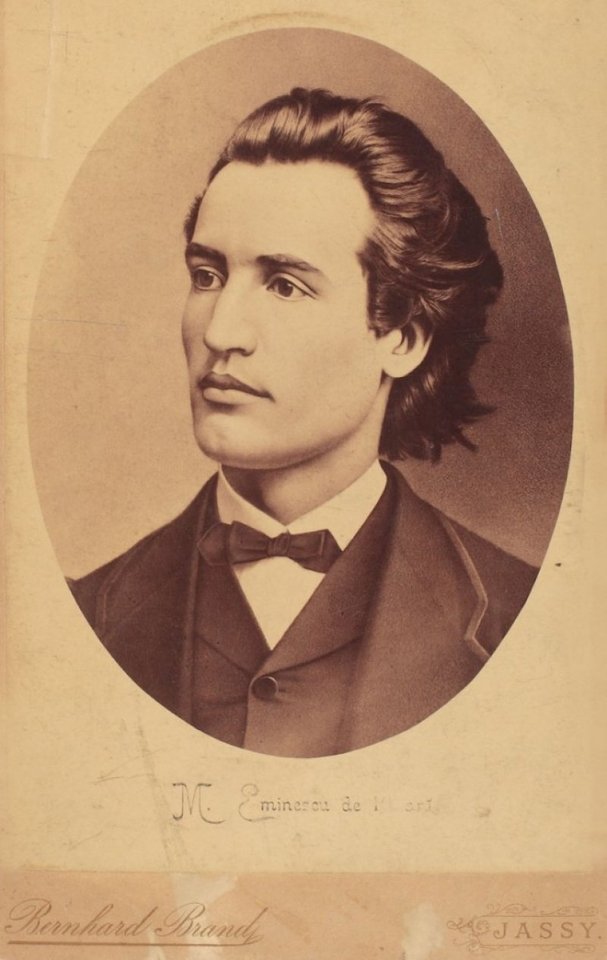
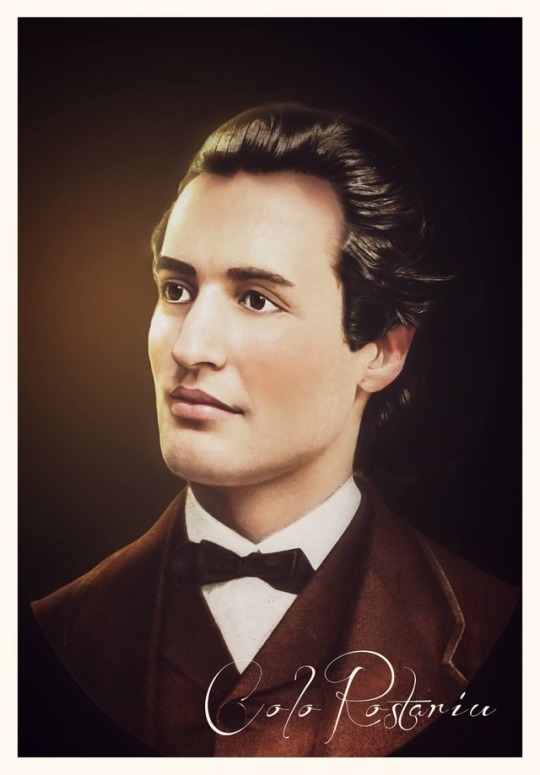
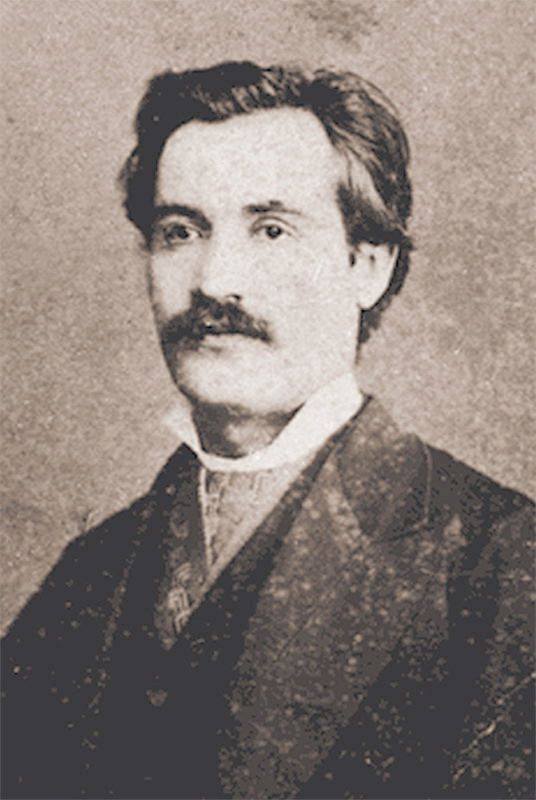

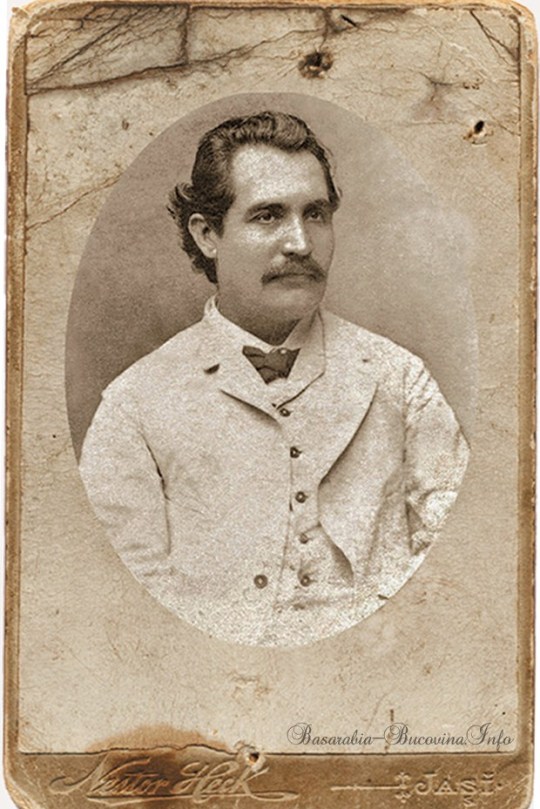







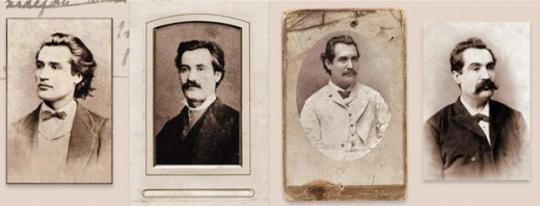



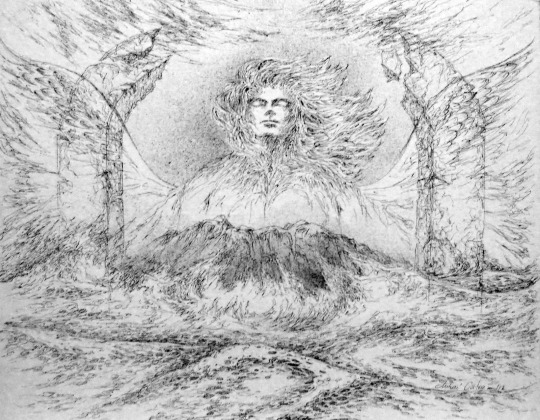





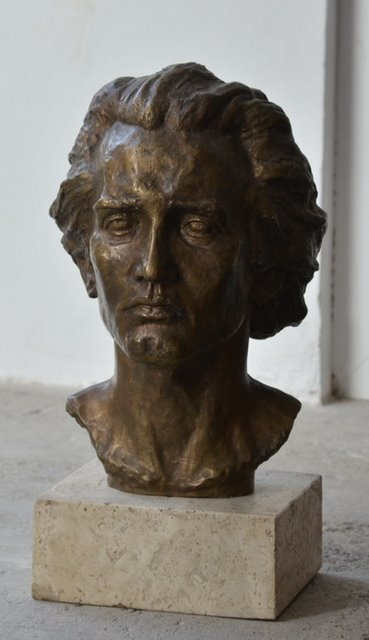



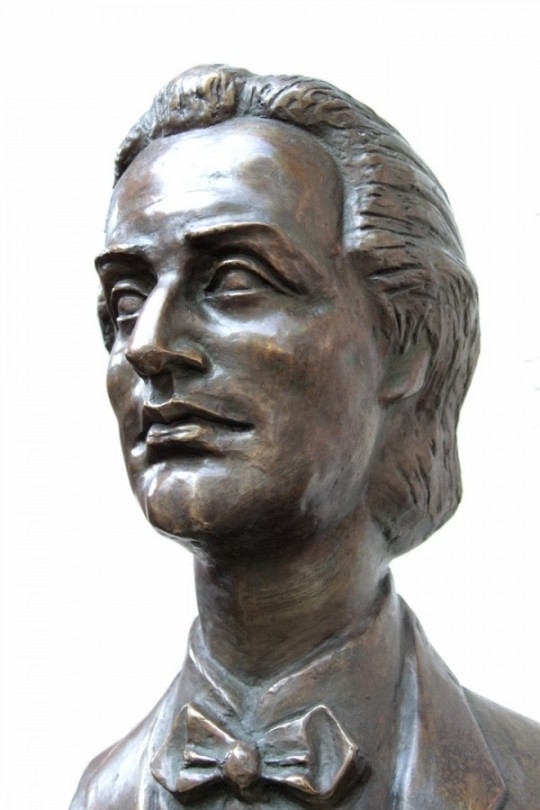









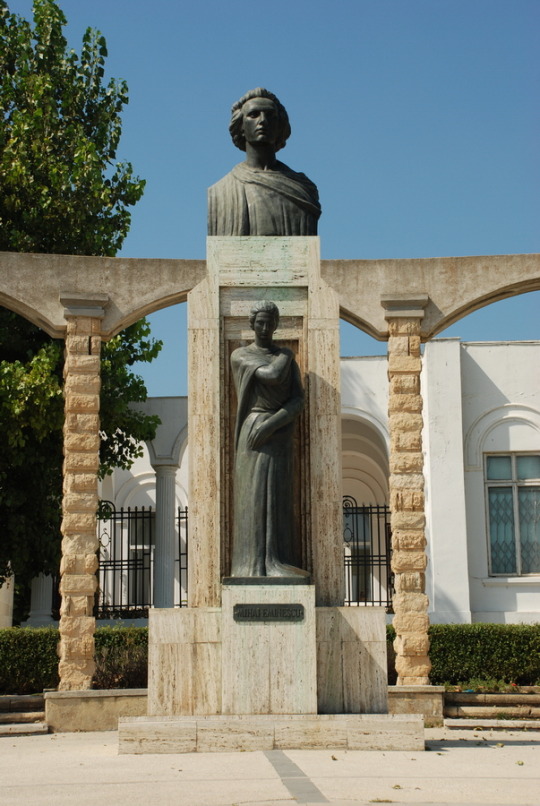

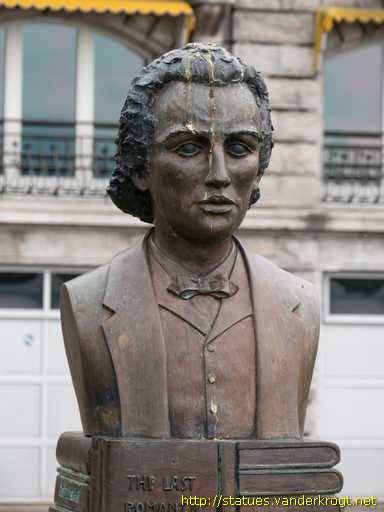
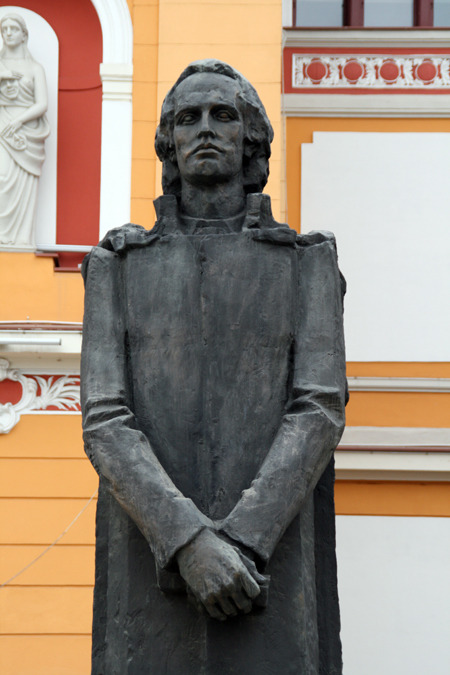
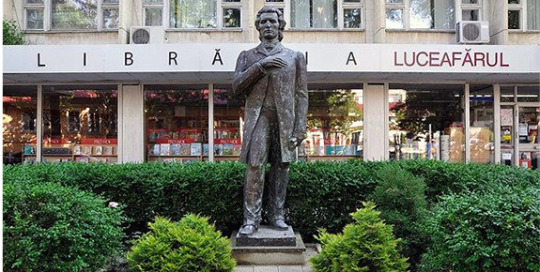





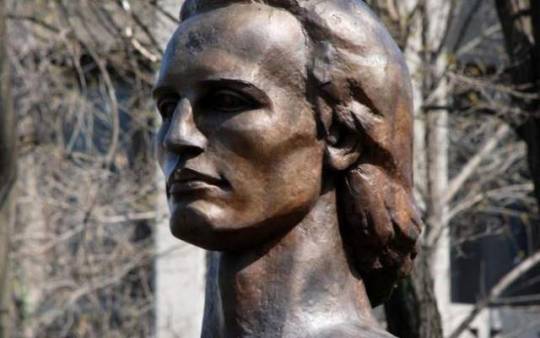


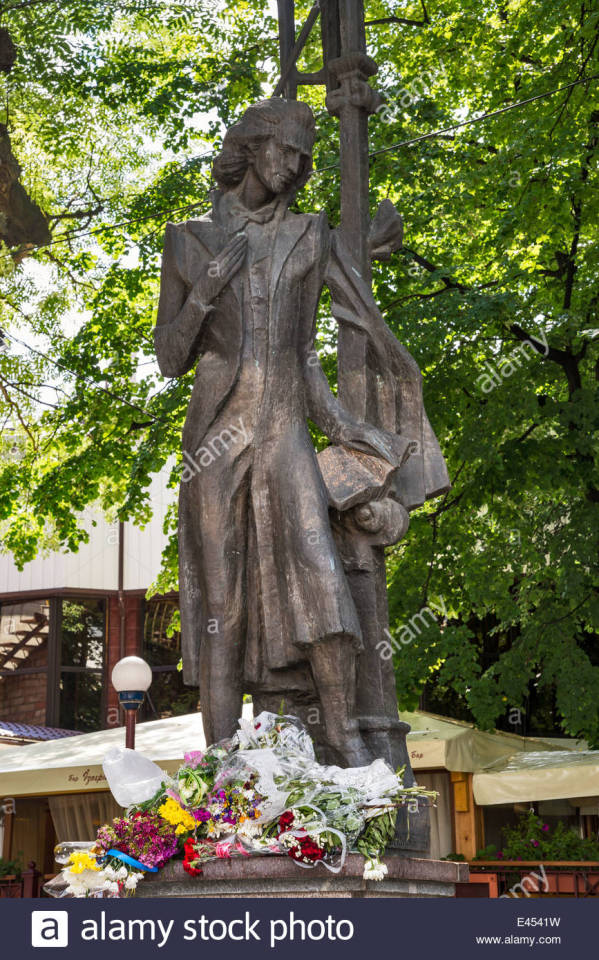



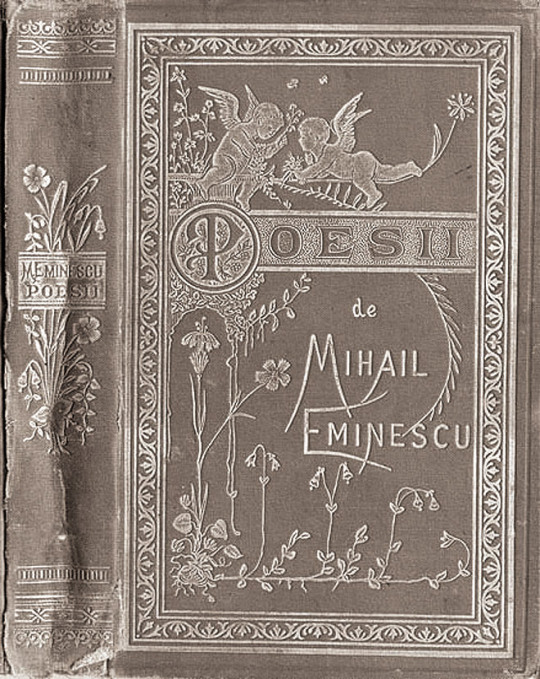
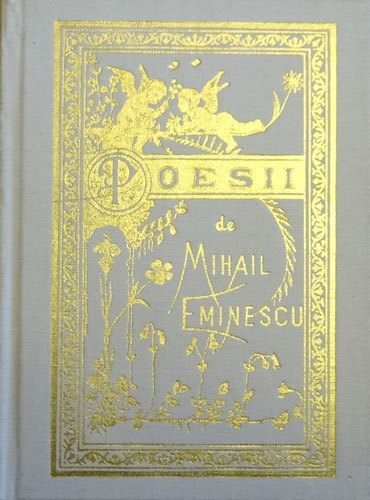


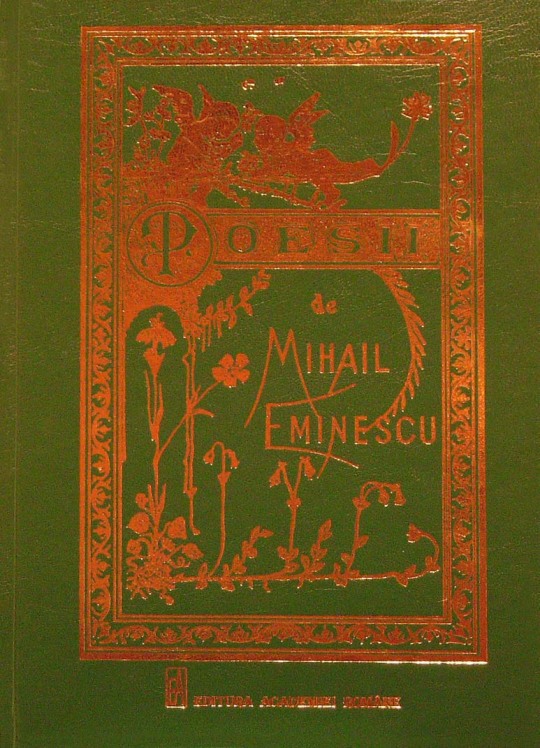
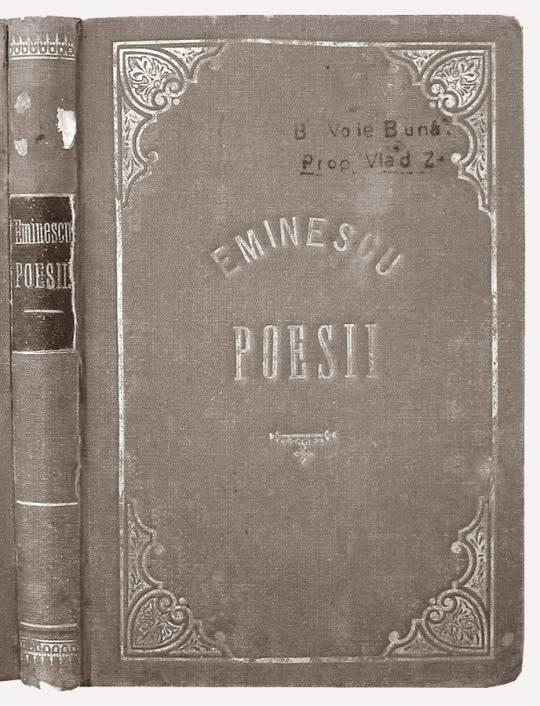

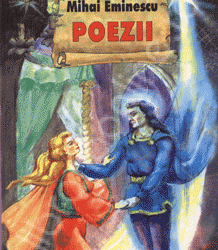











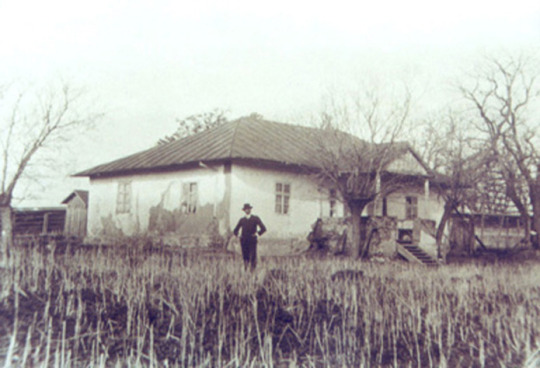
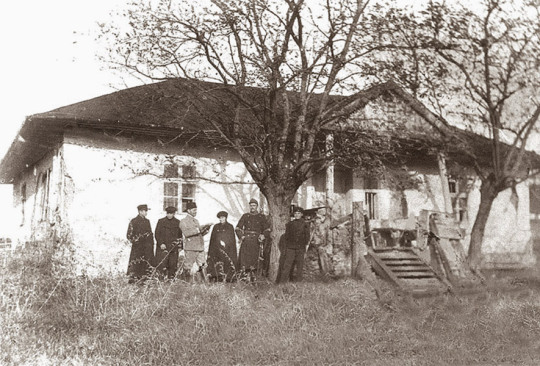

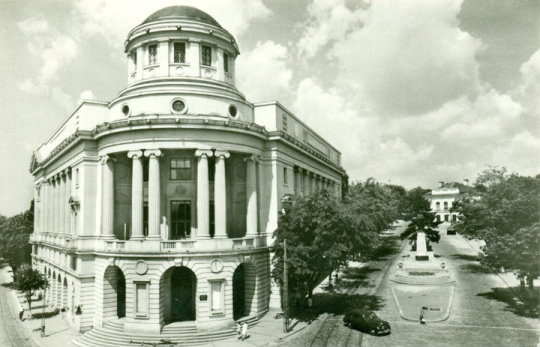



Mihai Eminescu
Mihai Eminescu (Romanian pronunciation: [miˈhaj emiˈnesku]; born Mihail Eminovici; 15 January 1850 Botoșani, Principality of Moldavia – 15 June 1889 Bucharest, Kingdom of Romania) was a Romantic poet, novelist and journalist, often regarded as the most famous and influential Romanian poet. Eminescu was an active member of the Junimea literary society and worked as an editor for the newspaper Timpul ("The Time"), the official newspaper of the Conservative Party (1880–1918). His poetry was first published when he was 16 and he went to Vienna to study when he was 19. The poet's manuscripts, containing 46 volumes and approximately 14,000 pages, were offered by Titu Maiorescu as a gift to the Romanian Academy during the meeting that was held on 25 January 1902. Notable works include Luceafărul (The Vesper/The Evening Star/The Lucifer/The Daystar), Odă în metru antic (Ode in Ancient Meter), and the five Letters (Epistles/Satires). In his poems he frequently used metaphysical, mythological and historical subjects.
His father was Gheorghe Eminovici from Călinești, a Moldavian village in Suceava county, Bucovina, which was then part of the Austrian Empire (while his father came from Banat). He crossed the border into Moldavia, settling in Ipotești, near the town of Botoșani. He married Raluca Iurașcu, an heiress of an old aristocratic Moldavian family. In a Junimea register, Eminescu wrote down his birthday date as 22 December 1849, while in the documents Cernăuți Gymnasium, where Eminescu studied, his birthday date is 14 December 1849. Nevertheless, Titu Maiorescu, in his work Eminescu and His Poems (1889) quoted N. D. Giurescu's research and adopted his conclusion regarding the date and place of Mihai Eminescu's birth, as being 15 January 1850, in Botoșani. This date resulted from several sources, amongst which there was a file of notes on christenings from the archives of the Uspenia (Domnească) Church of Botoșani; inside this file, the date of birth was "15 January 1850" and the date of christening was the 21st of the same month. The date of his birth was confirmed by the poet's elder sister, Aglae Drogli, who affirmed that the place of birth was the village of Ipotești.
Mihail (as he appears in baptismal records) or Mihai (the more common form that he used) was born in Botoșani, Moldavia. He spent his early childhood in Botoșani and Ipotești, in his parents' family home. From 1858 to 1866 he attended school in Cernăuți. He finished 4th grade as the 5th of 82 students, after which he attended two years of gymnasium.
The first evidence of Eminescu as a writer is in 1866. In January of that year Romanian teacher Aron Pumnul died and his students in Cernăuţi published a pamphlet, Lăcrămioarele învățăceilor gimnaziaști (The Tears of the Gymnasium Students) in which a poem entitled La mormântul lui Aron Pumnul (At the Grave of Aron Pumnul) appears, signed "M. Eminovici". On 25 February his poem De-aș avea (If I Had) was published in Iosif Vulcan's literary magazine Familia in Pest. This began a steady series of published poems (and the occasional translation from German). Also, it was Iosif Vulcan, who disliked the Slavic source suffix "-ici" of the young poet's last name, that chose for him the more apparent Romanian "nom de plume" Mihai Eminescu.
In 1867, he joined Iorgu Caragiale's troupe as a clerk and prompter; the next year he transferred to Mihai Pascaly's troupe. Both of these were among the leading Romanian theatrical troupes of their day, the latter including Matei Millo and Fanny Tardini-Vlădicescu (ro). He soon settled in Bucharest, where at the end of November he became a clerk and copyist for the National Theater. Throughout this period, he continued to write and publish poems. He also paid his rent by translating hundreds of pages of a book by Heinrich Theodor Rotscher, although this never resulted in a completed work. Also at this time he began his novel Geniu pustiu (Wasted Genius), published posthumously in 1904 in an unfinished form.
On 1 April 1869, he was one of the co-founders of the "Orient" literary circle, whose interests included the gathering of Romanian folklore and documents relating to Romanian literary history. On 29 June, various members of the "Orient" group were commissioned to go to different provinces. Eminescu was assigned Moldavia. That summer, he quite by chance ran into his brother Iorgu, a military officer, in Cișmigiu Gardens, but firmly rebuffed Iorgu's attempt to get him to renew ties to his family.
Still in summer 1869, he left Pascaly's troupe and traveled to Cernăuţi and Iaşi. He renewed ties to his family; his father promised him a regular allowance to pursue studies in Vienna in the fall. As always, he continued to write and publish poetry; notably, on the occasion of the death of the former ruler of Wallachia, Barbu Dimitrie Știrbei, he published a leaflet, La moartea principelui Știrbei ("On the Death of Prince Știrbei").
From October 1869 to 1872 Eminescu studied in Vienna. Not fulfilling the requirements to become a university student (as he did not have a baccalaureate degree), he attended lectures as a so-called "extraordinary auditor" at the Faculty of Philosophy and Law. He was active in student life, befriended Ioan Slavici, and came to know Vienna through Veronica Micle; he became a contributor to Convorbiri Literare (Literary Conversations), edited by Junimea (The Youth). The leaders of this cultural organisation, Petre P. Carp, Vasile Pogor, Theodor Rosetti, Iacob Negruzzi and Titu Maiorescu, exercised their political and cultural influence over Eminescu for the rest of his life. Impressed by one of Eminescu's poems, Venere şi Madonă (Venus and Madonna), Iacob Negruzzi, the editor of Convorbiri Literare, traveled to Vienna to meet him. Negruzzi would later write how he could pick Eminescu out of a crowd of young people in a Viennese café by his "romantic" appearance: long hair and gaze lost in thoughts.
In 1870 Eminescu wrote three articles under the pseudonym "Varro" in Federaţiunea in Pest, on the situation of Romanians and other minorities in the Austro-Hungarian Empire. He then became a journalist for the newspaper Albina (The Bee) in Pest. From 1872 to 1874 he continued as a student in Berlin, thanks to a stipend offered by Junimea.
From 1874 to 1877 he worked as director of the Central Library in Iași, substitute teacher, school inspector for the counties of Iași and Vaslui, and editor of the newspaper Curierul de Iași (The Courier of Iaşi), all thanks to his friendship with Titu Maiorescu, the leader of Junimea and rector of the University of Iași. He continued to publish in Convorbiri Literare. He became a good friend of Ion Creangă, a writer, whom he convinced to become a writer and introduced to the Junimea literary club.
In 1877 he moved to Bucharest, where until 1883 he was first journalist, then (1880) editor-in-chief of the newspaper Timpul (The Time). During this time he wrote Scrisorile, Luceafărul, Odă în metru antic etc. Most of his notable editorial pieces belong to this period, when Romania was fighting the Ottoman Empire in the Russo-Turkish War of 1877–1878 and throughout the diplomatic race that eventually brought about the international recognition of Romanian independence, but under the condition of bestowing Romanian citizenship to all subjects of Jewish faith. Eminescu opposed this and another clause of the Treaty of Berlin: Romania's having to give southern Bessarabia to Russia in exchange for Northern Dobrudja, a former Ottoman province on the Black Sea.
The 1880s were a time of crisis and deterioration in the poet's life, culminating with his death in 1889. The details of this are still debated.
From 1883 - when Eminescu's crisis and deviant behaviors became evident - until 1886, the poet was treated in Austria and Italy, by specialists that managed to put him on his feet, as testified by his good friend, writer Ioan Slavici. In 1886, Eminescu suffered a nervous breakdown and was treated by Romanian doctors, in particular Julian Bogdan and Panait Zosin. Immediately diagnosed with syphilis, after being hospitalized in a nervous diseases hospice within the Neamț Monastery, the poet is treated with mercury. Firstly, massages in Botoșani, applied by Dr. Itszak, and then in Bucharest at Dr. Alexandru A. Suțu's sanatorium, where between February–June 1889 he was injected with mercuric chloride. Professor Doctor Irinel Popescu, corresponding member of the Romanian Academy and president of the Academy of Medical Sciences of Romania, states that Eminescu died because of mercury poisoning. He also says that the poet was "treated" by a group of incompetent doctors and held in misery, which also shortened his life. Mercury was prohibited as treatment of syphilis in Western Europe in the 19th century, because of its adverse effects.
Mihai Eminescu died at 4 am, on 15 June 1889 at the Caritas Institute, a sanatorium run by Dr. Suțu and located on Plantelor Street Sector 2, Bucharest. Eminescu's last wish was a glass of milk, which the attending doctor slipped through the metallic peephole of the "cell" where he spent the last hours of his life. In response to this favor he was said to have whispered, "I'm crumbled". The next day, on 16 June 1889 he was officially declared deceased and legal papers to that effect were prepared by doctors Suțu and Petrescu, who submitted the official report. This paperwork is seen as being ambiguous, because the poet's cause of death is not clearly stated and there was no indication of any other underlying condition that may have so suddenly resulted in his death. In fact both the poet's medical file and autopsy report indicate symptoms of a mental and not physical disorder. Moreover, at the autopsy performed by Dr. Tomescu and then by Dr. Marinescu from the laboratory at Babeș-Bolyai University, the brain could not be studied, because a nurse inadvertently forgot it on an open window, where it quickly decomposed.
One of the first hypotheses that disagreed with the post mortem findings for Eminescu's cause of death was printed on 28 June 1926 in an article from the newspaper Universul. This article forwards the hypothesis that Eminescu died after another patient, Petre Poenaru, former headmaster in Craiova, hit him in the head with a board.
Dr. Vineș, the physician assigned to Eminescu at Caritas argued at that time that the poet's death was the result of an infection secondary to his head injury. Specifically, he says that the head wound was infected, turning into an erysipelas, which then spread to the face, neck, upper limbs, thorax, and abdomen. In the same report, cited by Nicolae Georgescu in his work, Eminescu târziu, Vineș states that "Eminescu's death is not due to head trauma occurred 25 days earlier and which had healed completely, but is the consequence of an older endocarditis (diagnosed by late professor N. Tomescu)".
Contemporary specialists, primarily physicians who have dealt with the Eminescu case, reject both hypotheses on the cause of death of the poet. According to them, the poet died of cardio-respiratory arrest caused by mercury poisoning. Eminescu was wrongly diagnosed and treated, aiming his removal from public life, as some eminescologists claim. Eminescu was diagnosed since 1886 by Dr. Julian Bogdan from Iași as syphilitic, paralytic and on the verge of dementia due to alcohol abuse and syphilitic gummas emerged on the brain. The same diagnosis is given by Dr. Panait Zosin, who consulted Eminescu on 6 November 1886 and wrote that patient Eminescu suffered from a "mental alienation", caused by the emergence of syphilis and worsened by alcoholism. Further research showed that the poet was not suffering from syphilis.
youtube
youtube
0 notes